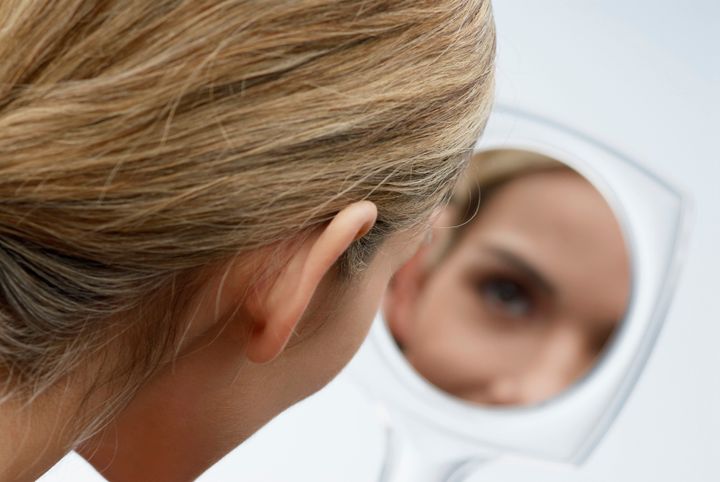
My friend Marilyn recently adopted a beautiful cat, all white, with deep blue eyes. The cat loves to gaze at herself in the floor-length mirrors on Marilyn's closet doors. What does she see? Is she admiring her own beauty? Or is she fascinated by the sight of what she thinks is another cat?
This kind of question has been studied systematically, and the results give us some insight into the varieties of animal intelligence. Many species of animals will pay attention to their image in a mirror, but only a few exhibit behaviors that indicate that they recognize the image as a reflection of themselves.
In fact, there is a characteristic sequence some animals employ to determine the meaning of their image in a mirror. A chimpanzee will first attempt to make direct contact with the image. Then he will look behind the mirror to see if anything is there. Finally, he will begin to examine himself in the mirror, inspecting his own eyes or teeth, for example.
In order to determine in a more definitive way how the chimpanzee interprets his image, a red dot is sometimes painted on his forehead. If the chimp sees the dot on his forehead in the mirror, and then touches his forehead to investigate, it seems fairly clear that he understands that the image is a reflection of himself.
Several of the higher primates can learn to realize that what they see in the mirror is an image of themselves. Dolphins and elephants also have this capacity, but dogs and cats do not.
Scientists have long sought to determine some definitive way of distinguishing human intelligence from that of non-human animals. Tool making and language were at one time considered unique to humans, but further research has shown that is not necessarily the case. The use of objects as tools has been observed in the wild, among birds as well as mammals. And, with appropriate training, a surprising facility for language has been documented not only among higher primates but also with Alex, the African Grey Parrot raised and taught by Diane Pepperberg. And who knows what dolphins are able to communicate, in a language we humans have not yet been able to decipher?
Since tool-use and language no longer seem definitive, self-awareness is now considered to be the crucial capacity that distinguishes man from animal. But if a few species demonstrate some form of rudimentary self-awareness -- as indicated by the mirror test -- then what remains to separate us from the rest of the animal kingdom?
Here is where the situation becomes more complex and subtle. Many will argue that the human form of self-awareness is more advanced and fully developed than it is in animals. On the other hand, a few distinguished thinkers have argued precisely the opposite, that our characteristic sense of self or personal identity is in fact a kind of illusion and the source of many of our difficulties.
This position is present not only in some schools of Buddhism, but also among contemporary academic philosophers, including Daniel Dennett. But no one has made the case that personal identity is an illusion more comprehensively than has J. Krishnamurti.
We assume that the self is the one who thinks, observes the world, and decides what actions he or she will take. But Krishnamurti shows in careful detail that the thinker, the observer, is in fact not the source of thought but a product, an invention of thought.
In Krishnamurti's view, our characteristic sense of self or identity is an illusion created by thought, because thought does not understand its own nature. The self is in essence a bundle of memories, an image we have constructed based upon past experiences. From this illusion there follows a world of conflict and confusion.
So the cat that gazes at her image in the mirror may not have the same understanding as dolphins or elephants or chimpanzees. But we should be cautious about assuming that our own sense of self is flawless and not infected with false elements.
Mirror, mirror on the wall, who is wisest of them all? Maybe in this most fundamental area, we humans still have something vital left to learn.
For more by David Edmund Moody, click here.
For more on consciousness, click here.